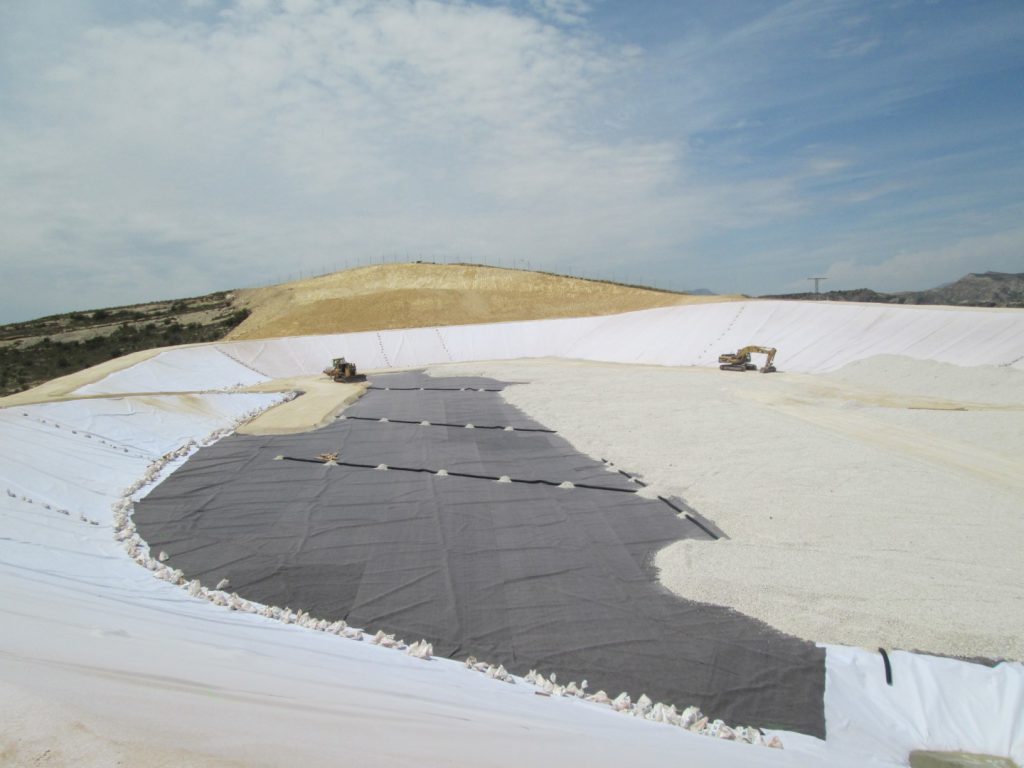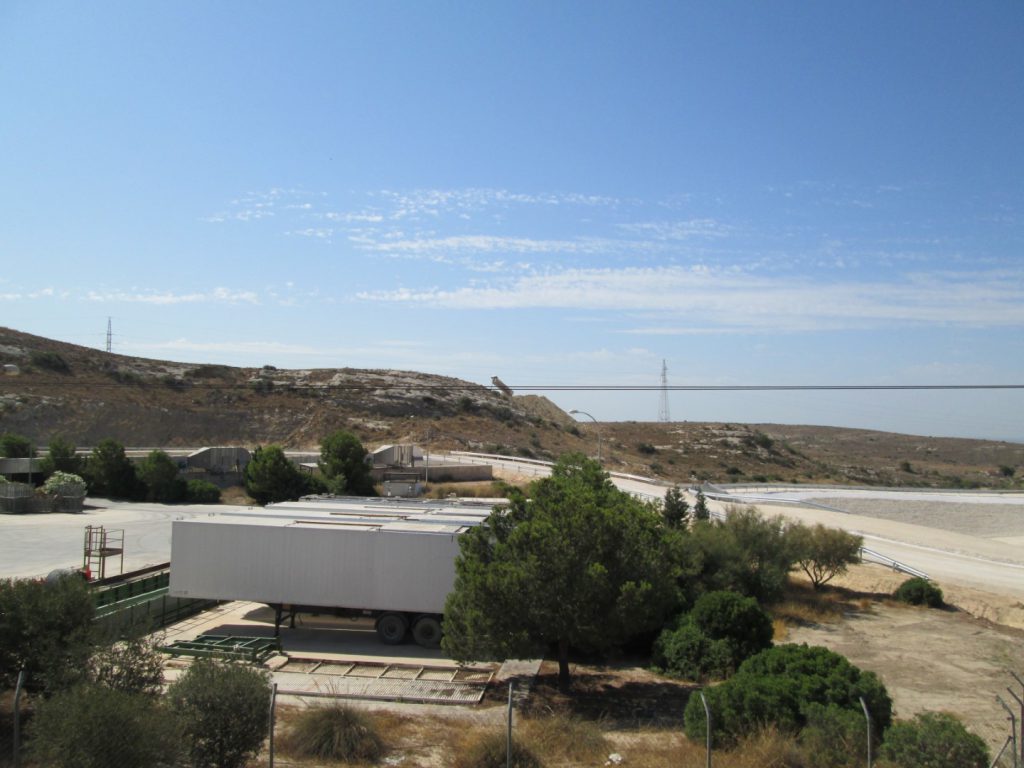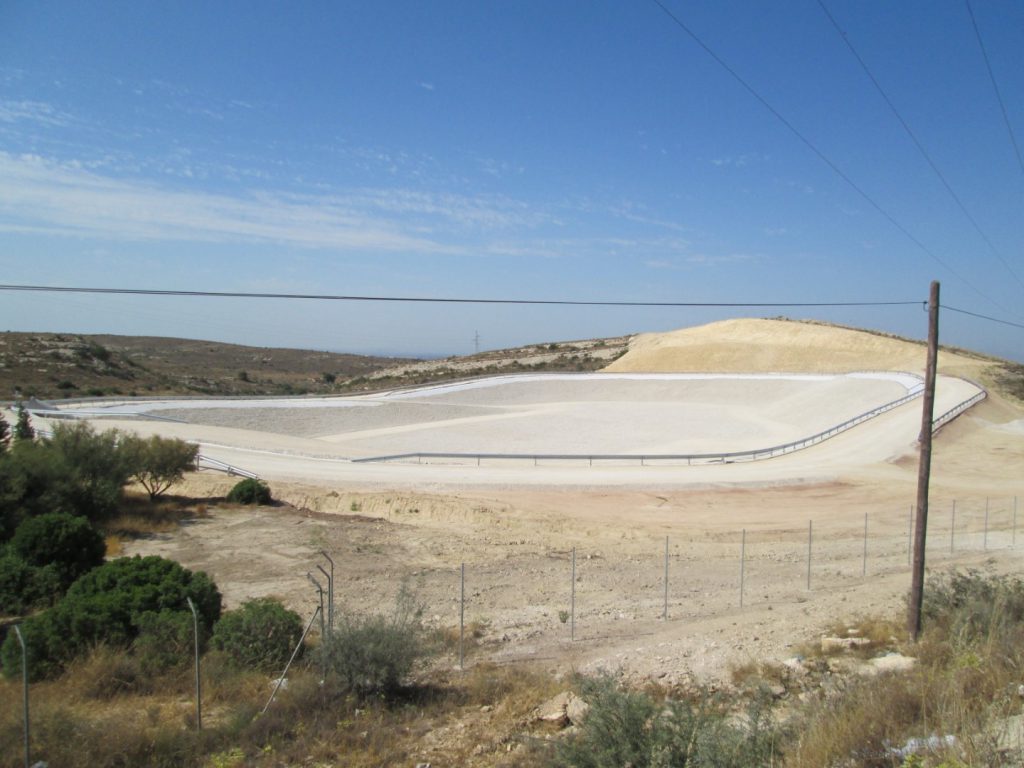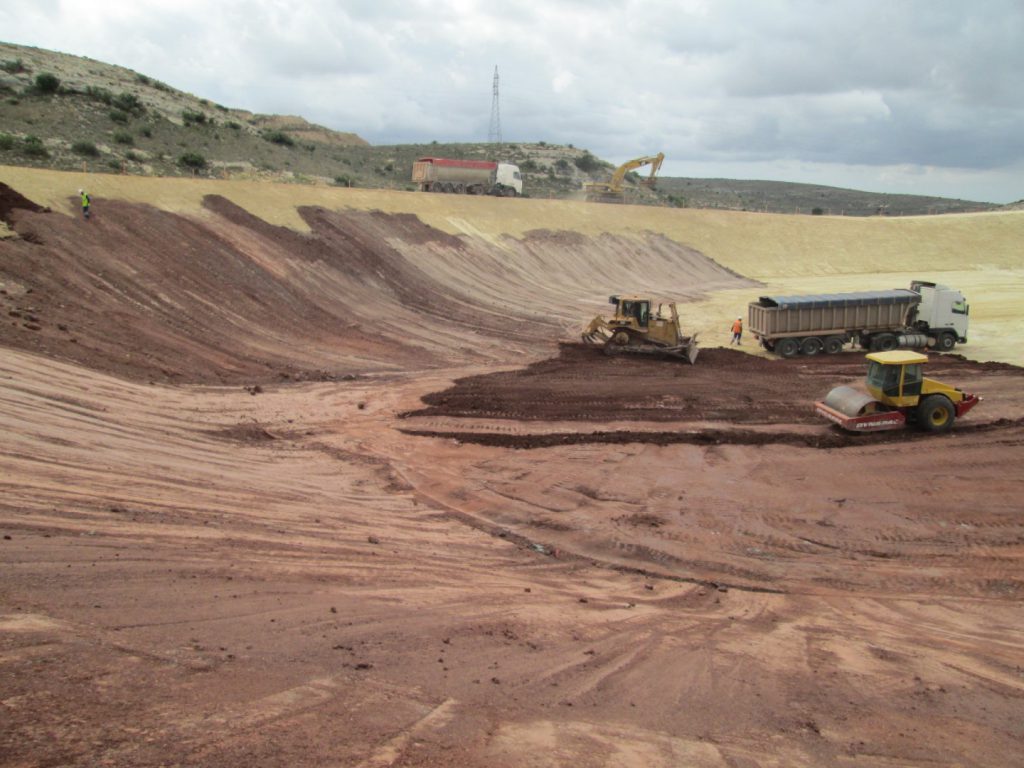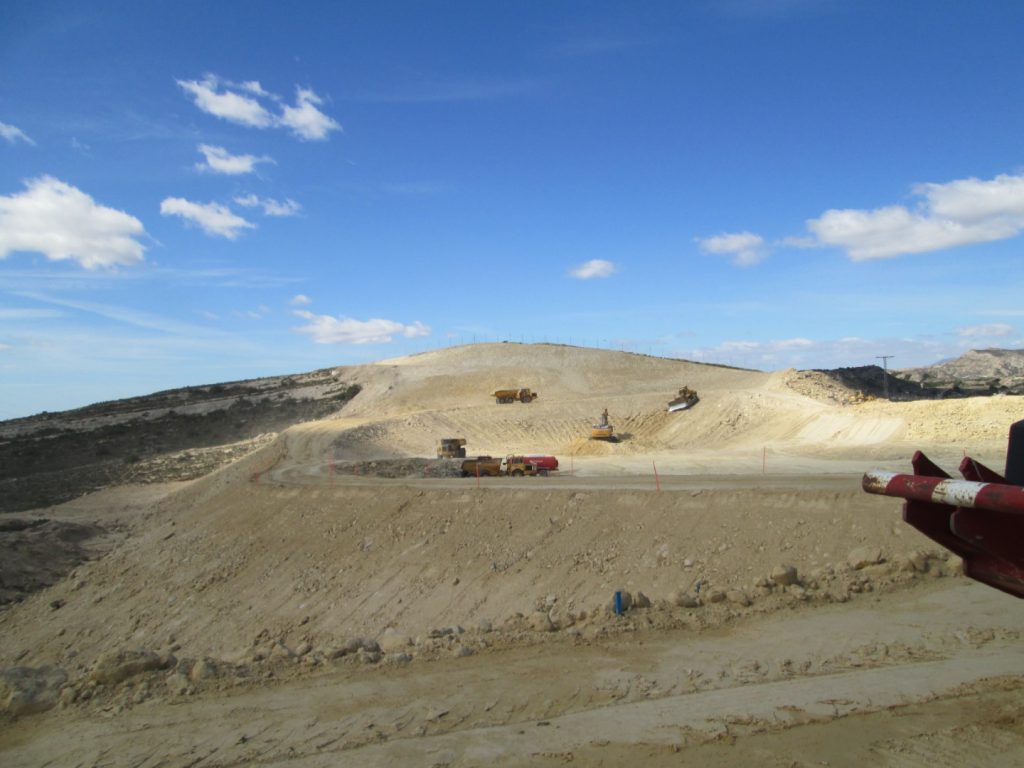The work involved supervising and inspecting the construction works of a discharge cell of 279,889 m3 gross capacity (201,520.08 net reject tons) for an estimated duration of 24 months. The main features of the works are:
- Conditioning of stage I of cell 2: excavation of 45,099 m3 at the bottom of the pouring vessel. Filling of 64,699 m3 with selected excavation material for perimeter roads and dams. Extension of 22.504 m3 of clay for natural geological barrier. Installation of 23,904 m2 of HDPE sheet of 2 mm thickness welded for artificial geological barrier. Installation of 13.099 m2 of geotextile sheet to prevent punching. Installation of 11.252 m2 of draining gravel 20/40 at the bottom of slopes of the pouring vessel for draining layer.
- Leachate base of 4,220 m3 capacity: excavation of 6,016 m3 at the bottom of the pond. Filling of 969 m3 with material selected from the excavation for external slopes and perimeter road. Extension of 2,000 m3 of clay to form the natural geological barrier. Installations of 8,844 m2 of 2 mm thick HDPE sheet welded in two layers for a double artificial geological barrier with an intermediate air chamber that allows detection of leachate leaks.
- Network of hydrogeological control piezometers: drilling with DN 220 mm and in addition to the excavation of the carbon steel pipe DN 180 mm and 6 mm thick. Ring cementing with 10 cm of cement grout. Classified siliceous engraving 3-5 mm. Rylbrum type 2” drive pipe. Equipped with 4” submersible pumps. Installation of 4 short piezometers between 15 and 20 m deep and 2 long piezometers more than 100 m deep

